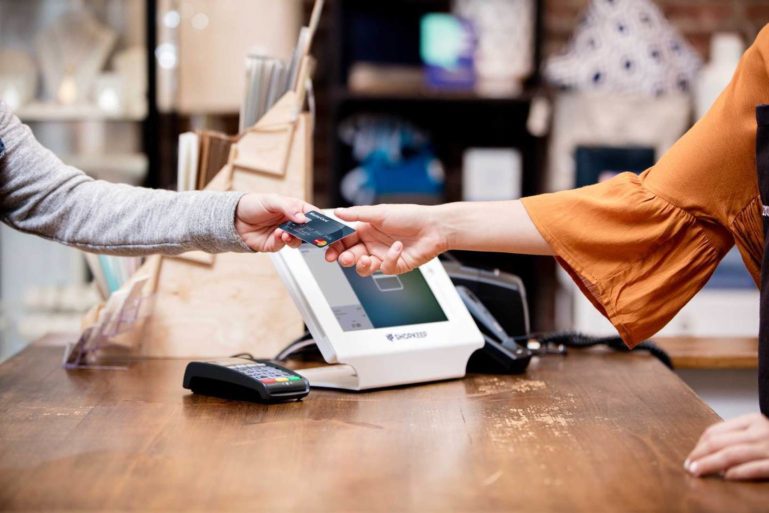
How to Run a Business in Today’s Competitive Market
According to the U.S. Census, there are nearly 28 million small businesses in the United States — evidence that businesses like yours are essential to our growing economy, accounting for nearly two-thirds of new jobs created each year.
However, running a business, especially a brick-and-mortar store, can be challenging with the myriad of online competitors and individual marketplaces like Etsy and Amazon. To run a business successfully, today’s small retailer needs to be smart and efficient in how they manage business relationships, their brand, and finances. This guide is designed to show you exactly how to run an efficient business in today’s competitive retail environment.
I. How to Manage Vendor Relationships
An essential part of running any retail business is finding good, quality products at prices that will allow you to make a reasonable profit. It’s not too simplistic to say that your business is only as good as the products it sells. And the products you sell will be impacted by the quality of your vendor relationships.
What is a wholesale supplier and why do I need one?
Creating and nurturing a relationship with one or two vendors can help your run a better retail business in a number of ways. First, when you have strong ties with your vendors, they are more likely to fill your order first if they have a shortage of products. In addition, they’ll advise you of new products, items that might be on sale, and work with you on financing. By limiting the number of suppliers you use, your staff will become more familiar with the products, making it easier for them to order and discuss items with your customers. An added benefit is that the quality of products is usually more consistent when you limit your suppliers to just a few preferred sellers.
How to Find and Choose Wholesale Suppliers.
While it may be easier to simply pick the first vendor that appears in a Google search, that is rarely the best approach. So, what criteria should you use to locate and vet suppliers? To find vendors you can work and grow with, consider the following:
- Verify all of the vendor’s contact information. The first thing you should do when vetting a potential vendor is to make sure that they are who they say they are. A sure sign of a potentially bogus vendor is when the information on their business card, website or promotional email cannot be easily verified.
- Check references and request a face-to-face interview. Checking references is not only for hiring employees. It can be invaluable for choosing reliable vendors.

Since you’ll be working with these suppliers (ideally) for a long period of time, a face-to-face interview is always a good idea. No only is it the first step towards forging a close working relationship, but it can also help you determine if the contact person is easy to work with. After all, it is possible that a perfectly legitimate and ethical vendor may have a salesperson or representative whose personality doesn’t mesh with your own.
When in-person interviews aren’t possible, such as when a potential vendor is located across the country or even overseas, you can set up a virtual interview using software platforms like Facetime and Skype. While in-person interviews can generally give you a better overall impression of the vendor you’ll be working with, holding a virtual interview is always preferable over a phone interview. It allows you to see the person’s gestures and facial expressions. In addition, the American Society for Quality (ASQ) recommends checking the company’s Dun and Bradstreet report as well as the company’s report with the local BBB and/or Chamber of Commerce.
For specialized sellers, sites like AliExpress can also be invaluable. These virtual marketplaces can introduce you to a variety of wholesalers you might not otherwise be aware of.
SEE ALSO: 5 Things You Need to Know Before You Start a Small Business
Assessing Supplier Costs and Benefits
- Look into pricing. Pricing is another essential part of any good vendor relationship and key to running a profitable retail business. Even the most otherwise attractive vendor won’t serve your needs if their pricing is significantly higher for the same quality products as other potential vendors. Make sure, however, when you are comparing vendors that you’re looking at equal pricing. Some vendors may include value-added elements, such as free shipping or free items when you purchase a quantity.
- Ask about delivery methods and cost. Delivery is also vital. You need to have product on hand when your customers want it. If all other things are equal, a local vendor will probably be best, since they can get your delivery to your quickly with a minimum shipping charge. Also important is the methods the vendor uses for delivery. Can they get you products to fill an important, last minute order quickly? Are there a variety of delivery options, depending on your time constraints?
- Inquire about preferred treatment/pricing. One of the things you should expect from a preferred vendor is special treatment. That doesn’t mean that you should be demanding and ask for the world, but it’s not unreasonable to ask for a few things that the vendor wouldn’t offer to every customer. This can be things like advance notice of new products, sales, and consumer promotions, and lower pricing based on volume and/or hitting mutually-agreed-upon benchmarks. You can also ask for value-added items, such as gifts for your customers with a purchase of certain items. Preferred pricing is generally dependent on your ordering a minimum quantity of products and/or using that vendor exclusively to supply products in their industry or niche.
- Don’t discount customer service. While pricing may seem like the most important factor in choosing between two like vendors, the true answer might just be customer service. You want a vendor that returns your calls, texts, and emails; who communicates easily about any challenges or delays and who is willing to go the extra mile to help make you (their customer) happy. How do you know if you’re getting good customer service? One of the keys to running a successful retail business is knowing the right things to ask for. Inc. advises companies to communicate often with their vendors and not to expect them to automatically know what you need without telling them.
The ideal vendor relationship is one that strives to achieve a win-win atmosphere. When you succeed, they succeed, and vice versa.

Negotiating Wholesale Prices
A little more needs to be said about negotiating pricing with vendors when running a business. (We’ll talk more in the next section about setting pricing for your customers.) Squeezing suppliers is a delicate art. As with other aspects of the vendor-customer relationship, you need to feel like you got something out of the negotiation without making your vendor feel taken advantage of. Having said that, however, Info Entrepreneurs (a Canadian-based small business website) advises to never accept the first pricing offer. They advise making a low (but not insulting) counter-offer with the expectation that you and the vendor will agree to a price somewhere in between the two amounts.
While it’s great to get a low price, be wary if the initial price offer is too low. This could be an indication of an inferior product or a business that is not healthy financially (putting your inventory at risk if the company goes out of business).
Creating Strong Ties for Long-Term Vendor Relationships
Given the amount of time and effort you expend in finding the right vendors for your company and your customers, it’s understandable that you’ll want those relationships to grow and solidify for years to come. After all, the better you get to know your vendors (and they get to know you), the less time you both have to spend finding out what the other party wants. They’ll have a better idea of what type of products your customers want and you’ll have a better idea of want you can ask of them.
Below are just a few tips for forging and strengthening strong ties with your vendors.
- Be upfront and clear about your business goals. Share your business goals with your vendors. That way, they don’t have to guess what’s important to you and your business, giving them a better understanding of what products and programs you can leverage to help you achieve your goals. If pricing is your “hot button,” tell the vendor. If stellar customer service is your must-have, make sure they are aware of that as well.
- Assign one person to work with vendors. Having too many in-house vendor contacts can confuse partners and increases the risk of sharing conflicting information. Plus, when they work with only one person, it’s easier for them to get to know that person and how best to communicate with them.
- Get everything in writing. While it can be tempting to do business over lunch with a handshake, the best policy is to put everything you and your partner have agreed to in writing. This way, there’s a record of the transaction to refer to if there are questions later.
II. How to Set Retail Pricing for Products
Pricing your merchandise is probably one of the most challenging —and important —things you must do when running a successful retail business. You want a price that will be competitive and that will be pleasing to your customers. However, at the same time, you need to cover your costs and allow for a reasonable profit. While it can be tempting to compete on pricing and offer the lowest prices possible, that is not always the best policy. Pricing also affects the customer’s perception of your products. Price them too low and they might equate the price with inferior quality.
SEE ALSO: Top Retail Pricing Strategies (HINT: POS Software Helps)
How to Estimate the Economic Value of Your Products
Successfully running a retail business requires using intelligent pricing strategies to arrive at the optimum price for your products. Using this method, you begin by looking at how other businesses in your industry are pricing their goods. You don’t want to set your pricing dramatically lower or higher than what your competition is doing. Keep in mind that setting pricing is not a one-time thing. Many large companies adjust their prices many times a day to reflect supply, demand, and competitors’ actions. While that is obviously unrealistic for most small retail businesses, it is a good idea to revisit your pricing at least weekly (if not more often) to make sure that you are being competitive. Free apps, such as Price Check by Amazon, can help make this process easier.
Pricing Structure Tips for Running a Better Business
So, now that you understand the general goals of your pricing structure, what tips and tactics can you use to stay atop of your pricing strategy and run a more profitable retail business? Consider the following:
- Listen to your customers. Whether it’s using a formal feedback form, an after-sale email survey or a casual in-store interview, make sure to reap the wealth of information your customers can offer you about your pricing. You might be surprised at the feedback.
- Lower your pricing with care. If your feedback or market survey indicates that your pricing is significantly higher than your competition, you still should hesitate to slash prices dramatically. This can send the wrong signal about the health of your business and the quality of your goods. Instead, consider a value-added approach, such as buy-one, get-one-free or at half-off. You could even offer a small product as a gift with purchasing the item at its original price.
- Market to a specific segment of the consumer public. No retail business can be all things to all consumers. Decide who the best customer for your product is, do all you can to attract them to your store and price your product accordingly. For example, if your store is located in a small town, don’t try to compete with the mall stores. Instead, appeal to the convenience and small town pride of shopping locally. You might even offer value-added services, such as free delivery, that are unheard of from mall stores or in the world of ecommerce.
Retail Pricing for Ecommerce vs. In-Store
Another question many brick and mortar store owners ask is whether they should offer different pricing to their in-store customers and their virtual (online) customers. While there is no one answer that applies to all businesses and all situations, the answer is generally “no.” It’s naive to assume that your in-person customers and your e-customers are always different people. Setting separate pricing can have the effect of driving your existing customers out of the store.
However, it’s important to make it easy for your customers to compare like-pricing. For instance, make your shipping policy clear as well as any promotions, such as gifts with purchase or discounts for spending a certain amount with you. Make your customers aware of any tax differences between purchasing online and in-person. For example, if your store is located in a state like Oregon that doesn’t charge sales tax, buying from you is likely less expensive than using an e-retailer with stores or warehouses in states where taxes are charged (or are charged at a higher rate).
Done well, ecommerce can augment your in-store sales and help increase your store’s and staff’s reputation as experts in your field. Physical stores will always have the advantage of allowing customers to see, feel, and try on the merchandise. For products such as clothes, shoes, artwork, and one-of-a-kind merchandise, this can be invaluable. According to Forbes magazine, the trend towards ecommerce is reversing, sending many e-retailers in search of storefronts.

III. Controlling and Recording Business Finances
Of course, all good business owners and managers know that selling and pricing are just one side of running a successful business. In order to be successful, you also need to carefully manage your spending and put systems in place to record and manage your business finances.
The Value of Keeping Accurate Financial Records
Putting good financial systems in place is an essential part of running any small retail business. How can you know if you’re meeting your sales and profit goals if you don’t have accurate records? However, good records are important for more than just measuring your own goals. Just a few of the reasons that good record-keeping is important to include:
- Taxes. Of course, good record-keeping helps your accountants prepare your taxes, make Social Security payments for your employees, and remit collected local taxes. Good record-keeping also helps to identify and maximize your tax deductions.
- Qualifying for loans. Most small businesses, at one time or another, need a little financial help to purchase inventory, help meet payroll during a slow season, or make renovations or repairs to the store. Having good, up-to-date records helps financial officers and other lending officials accurately and easily gauge the health of your company, so they can get you the money you deserve.
- Identifying potential problems and opportunities. Yet another reason to keep your records clean and up-to-date is that they can help you identify lines and products that may not be selling as predicted. Your sales records can also help identify products that are exceeding sales expectations — allowing you to order more products while they are still available and early enough so that your customers won’t have to wait for them to arrive.
- Valuation of company. One good reason to keep good financial records is to support the value of your company should you ever want to sell your business.
Understanding the Core Financial Statements
Now that you’re convinced of the importance of keeping good records, do you know what documents you need to be preparing every week, month, and year to ensure that you are running a profitable business? At a minimum, your small business will need to prepare the following:
- Income statement — This monthly document details all of the money that is coming into your business.
- Profit and loss statement — This monthly document expands on your income statement and deducts expenses from the income earned that month, arriving at the monthly profit or loss.
- Balance sheet — Unlike the income statement and P&L statement, your balance sheet lists all of your company’s assets and liabilities. Assets can include inventory, accounts receivables, and physical assets like cars and computer equipment. Liabilities might include money owed to vendors, accounts payable (for things like utilities and payroll), and accrued (but unpaid) taxes.
- Cash statement — A cash statement is another report that is essential to managing your small business, according to the U.S. Small Business Administration. This report tracks the cash that has come into your business and been paid out over the past month. This helps you gauge how much liquid assets you have available for things like payroll, utilities and product returns. It’s easy without careful monitoring for a small business to sink a lot of cash into inventory or equipment and not have the funds necessary to meet its obligations at the end of the month.
SEE ALSO: 5 Tricks to Increase Profitability in Your Small Business
Debt Management Basics: Good Debt vs. Bad Debt
All business debts are considered liabilities for most merchants and, unless you’re sitting on a pile of cash, it’s one of those common aspects of running a small business. However, when running a business, it’s important to understand the difference between good debt and bad debt. A debt is good or bad depending on the purpose that it was used for.
Still confused about bad debt vs. good debt? You’re not alone. The basic difference is that good debt has the potential of increasing your credit score or level of trustworthiness and credibility as a lendee. One example of this is opting for a small business loan and diligently paying it on time in an effort to earn a good standing with a bank.
Bad debt, on the other hand is the result of making poor business decisions, such as needed to take out a high-interest loan because your business is at risk of bankruptcy.
IV. Getting a Grasp on Risk Management
Risk management is the art and science of reducing your company’s financial exposure from things like theft, fire, vandalism, and even the seasonal fluctuations of your business. A good risk management program should include the following aspects:

Inventory Management
For most retail stores, keeping track of inventory and putting in place a system to help prevent shoplifting and loss is the most important part of risk management. After all, if you don’t have inventory, you can’t make a sale. For most businesses, investing in a point of sale system that digitally tracks inventory more than pays for itself. Such systems allow you to generate reports that show how your inventory is performing. A POS system with smart inventory also tracks costs and profit margins per item, simplifying reporting come tax season. It also makes it easier to determine if you are experiencing loss from shoplifting, damaged goods or as a result of a particular department in your business.
Minimizing Property and Personal Risks
Another aspect of risk management is guarding against losses from things like a building fire, hail, wind, and tree branches falling through the roof of your building. All small businesses need a good and varied portfolio of insurance coverages to guard against such occurrences. A few small business insurance coverages you’ll want to consider include:
- General liability. General liability insurance coverage helps protect you against financial loss should your business be sued for things like a person falling on the ice in front of your building or tripping on an extension cord in the store.
- Property coverage. Property coverage protects your physical building and its contents should there be a fire, theft or natural disaster.
- Vehicle insurance. As the name implies, vehicle insurance protects things like your delivery van and your salesperson’s car. It also protects against property damage and physical injuries when those vehicles are being driven.
- Home-based business. Not all small businesses are located in a separate building. An increasing number of businesses are being operated out of the owner’s home. According to the Small Business Administration, home-based businesses account for more than half of all U.S. small businesses. Contrary to what many business owners believe, most homeowner’s insurance policies do not cover home business inventory or equipment should those items be damaged by fire, theft or other disasters.
SEE ALSO: How to Purchase Small Business Insurance for a Retail Store
Predatory Lending
Another potential risk for small businesses is falling victim to those lenders who would seek to take advantage of a small business owner’s need for cash to meet payroll, buy inventory or otherwise keep his or her business afloat. Such lenders may offer funding for businesses that may otherwise not qualify for a loan, but tie those loans to a higher-than-normal interest rate.
Another form of predatory lending is requiring the business owner to put up the business or a portion of it as collateral for the loan. In such cases, if the owner fails to make payments, he or she loses the business to the lender.
Economic Fluctuations and Seasonality
Yet another area that small businesses will want to carefully manage is the seasonal sales ebbs and flows of the business. This will be different depending on your industry, geographic location, and type of product. For example, businesses that sell patio furniture in the Midwest and Northeast, often switch to selling holiday decor and Christmas trees after the warm weather season is over. Finding a creative and complementary product line can help to dramatically reduce cash flow issues due to seasonal product demands.
Brand and Customer Loyalty Risks
Finding ways to keep your customers loyal to your business and returning to your store again, and again is another aspect of managing your risk (and opportunities). To operate your retail business successfully maximize your store brand and create customer loyalty by:
- Establishing customer loyalty plans. Having a frequent shopper club, where your customers get something for free after they shop a certain number if times, is a great way to increase repeat business. Not only will it help increase repeat sales, but the customer is reminded of your brand every time she sees the loyalty card in her purse.
- Creating a strong social media presence. Interacting with your customers on Facebook, Twitter, Instagram, and Pinterest is another way to establish customer loyalty. Who can resist a picture of a restaurant’s lunch special when you’re already hungry…or a picture of a lovely accessorized outfit when you need something to wear to a party?
- The possibilities are virtually endless when you start thinking about customer appreciation ideas. You might pick a customer of the day, quote testimonials on your blog, throw a customer appreciation event or start a VIP club.
Running a small retail business in today’s competitive and demanding landscape doesn’t have to be an impossible task. However, it does require taking the time to create and nurture strong relationships with your vendors and suppliers, create a flexible and fluid pricing system, prioritize good record-keeping and financial systems, and manage your inventory and other potential risks carefully.
Want to try ShopKeep for yourself?
Just answer a few easy questions.
Need help finding the right point of sale?
Just complete the form. We’ll call you right back to explain how ShopKeep can work for you.
Hit the ground running.Sprinting, in fact!
Read our free, comprehensive guide, Small Business 101, to learn all you need to know about starting a thriving business.

